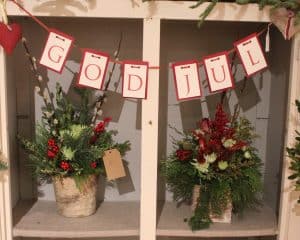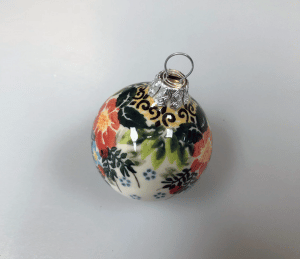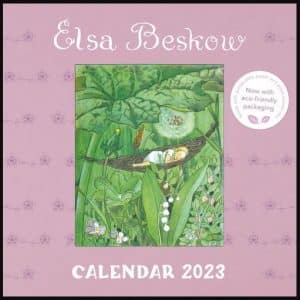
by Michael Scott | Nov 7, 2024 | Chicago Culture, Member Opportunities, Member Wire
Call for Activating Heritage Panel Proposals
CCA is excited to announce that we are accepting proposals for the 2025 Activating Heritage Conference. This year’s conference will be held on the UIC Campus in March 2025 (date tbd). For additional information on Activating Heritage, please visit last year’s conference page where you can learn more about previous panels, guest speakers, and conference highlights. Activating Heritage 2024 – Chicago Cultural Alliance
To propose a panel, roundtable discussion, or workshop for the 2025 Activating Heritage Conference, please fill out the Panel Submission form below.
If you have any questions, please contact Michael Scott, Programs Manager, at [email protected]

by Monica Felix | Aug 15, 2024 | Chicago Culture, Member Opportunities, Member Wire
Our town hall presentation will cover the basics of end-of-year fundraising: what should you and your team do to maximize the fundraising potential that exists in the final months of the calendar year?
Our presenter will be Dr. William Myatt. William is the founding owner of Major Gift Solutions, a boutique consulting firm that provides fundraising services for nonprofits. He has been a part of both large and small fundraising teams. As a gift officer, William has closed many 5- and 6-figure gifts – both as a full-time fundraiser and as a contractor serving clients. In 2022, he personally closed a 7-figure gift over Zoom – for an organization with a $2 million annual budget. Bill’s team has also provided structure for small nonprofits to cover the basics of fundraising activity. Bill’s presentation will cover the basic activities that your nonprofit can do to ensure that you raise as much as you can prior to the end of the year.

by Monica Felix | Jul 22, 2024 | Chicago Culture, Member Opportunities, Member Wire

Promoting Your Organization through the CCA with Demetrio P. Maguigad
Demetrio P. Maguigad (former board member and principal at Polyrhythmic) will join the August 6th Town Hall to share ways to promote your organization, events, and activities through the CCA’s various platforms and communication channels.

by Marketing | Dec 19, 2022 | Chicago Culture
Every country has its own unique way to welcome the new year and wish for good luck. You might be familiar with the famous ball drop in New York City, but do you know of other New Year’s Eve traditions around the world?
Before stressing about your New Year’s resolutions, why not take some time to celebrate? Read on for 5 New Year’s Eve traditions from different cultural traditions to inspire your festivities this year.
Brazil: Wearing White

This Brazilian tradition came from the Candomblé religion. People used to wear white during rituals to seek peace and spiritual purification. And now this is continued on New Year’s Eve when people hope to attract peace and spiritual protection for the coming year by wearing white outfits.
Haiti: Soup Joumou

January 1st is a special day for Haiti. It is not only the start of a new year but also the day to commemorate Haitian revolutionary leader Jean-Jacques Dessalines declaring the country’s independence from its French colonizers. For this special day, try following a recipe for a soup joumou, a squash-based soup with beef, carrots, turnips, potatoes, pasta, and more veggies.
Japan: Hatsuhinode

You might have heard of Hatsumode (first shrine visit) from popular media, but what to do on New Year’s when there is no shrine or temple in your area? No fear! Try Hatsuhinode instead by waking up at dawn to witness the first sunrise on New Year’s Day! This tradition is to welcome Toshigamisama, the deity of the New Year, for good fortune and happiness for the coming year.
Scotland: First Footing

Call your dark-haired friend or relative for a new year’s visit! Stemming back to the time of the invading Vikings in the 8th and 9th centuries, it is believed that the first person to enter a house, the “first foot”, can bring luck – or misfortune – for the year ahead. In Scottish tradition, good luck comes in the form of a tall, dark-haired man being the first footer. On the other hand, women, light-haired men, and redheads were seen as harbingers of ill fate.
Turkey and Greece: Smashing Pomegranates

Remember to grab a few pomegranates when you are doing your last-minute grocery haul next week! In both Turkey and Greece, people smash pomegranates into the floor or front door on this special day. The more seeds that burst out, the more good fortune you will acquire. The pomegranate is a sign of luck, prosperity, and fertility. It is also a sign of renewal and regeneration.
by Marketing | Nov 30, 2022 | Chicago Culture
The 2022 Chicago Culture Holiday Shopping Guide is here! It’s time to refresh your cultural gear and gift your loved ones local-made cultural arts and crafts and much more! The Chicago Cultural Alliance is partnering with over 40 cultural heritage centers, museums, and heritage societies across Chicago’s neighborhoods and suburbs. With choices ranging from books, paintings, artisanal crafts, food and drink you are bound to find the perfect gift for your friends and family, or just for yourself!
Before we get into the gift shops, don’t forget to swing by one or more Holiday Markets!
Sat, Dec 3, 10am–5pm | Sun, Dec 4, 10am–4pm
Julmarknad

Swedish American Museum
5211 N Clark St, Chicago, IL
Julmarknad is the Museum’s annual Christmas Bazaar, where traditional Scandinavian and modern handicrafts will be available for purchase. Visit the Children’s Museum for crafts, games, and a special visit from Santa. It is entertainment for the whole family and includes kaffestuga, Lucia processions, and folk dancers.
FREE
LEARN MORE HERE
Sat, Dec 10, 10am-5pm
Native American Holiday Art & Gift Market

American Indian Center
3401 W Ainslie St, Chicago, IL
Want more Native American arts and crafts? Swing by the Holiday Art & Gift Market! This market will not only satisfy your gift shopping needs but will entertain you with live drum & dance exhibitions and an Indian taco sale!
FREE
Sat, Dec 10, 11am-6pm
Weihnachtsmarkt

DANK HAUS
4740 N Western Ave, Chicago, IL
Come to a warm indoor Weihnachtsmarkt with German-inspired Christmas shopping, Glühwein, food, music and more! There will be German food and drink for sale as you stroll through rows of festive stands.
FREE
LEARN MORE HERE
Sat, Dec 10, 11am-5pm; Sun, Dec 11, 11am-5pm
Ukrainian Institute of Modern Art Holiday Maker’s Market

Ukrainian Institute of Modern Art
2320 W Chicago Ave Chicago, IL
Check out the Maker’s Market this year showcasing emerging & established creators to sell their work, grow their businesses, and join this vibrant community.
$5
REGISTER HERE
…and now let’s get on with the gift shops!

6500 S Pulaski Rd
Hours: Mon-Sat, 10am-4pm. Sun, 12pm-4pm.
The Balzekas’ Museum gift shop is filled with a huge variety of Lithuanian goods! Shop one-of-a-kind amber-made ornaments and jewelry imported straight from Lithuania, or pick up a history book or traditional children’s book from the shop.
SHOP NOW

Level up your closet and know that your purchase supports a local charity, Caledonia Senior Living and Memory Care! While you’re at it, why not drink your whiskey or beverage of choice in style with these Chicago Scots-themed glasses?
SHOP NOW

238 W 23rd St
Hours: Wed and Fri, 9:30am-2pm. Sat and Sun, 10am-4pm.
Learn more about Chinese American history by picking up a book from the gift shop when you visit the Chinese American Museum! Or maybe learn to cook a few Chinese dishes for your holiday potluck with an authentic cookbook.
SHOP NOW

Shop postcards, glassware, cookbooks, music, and more at the HAMOC! Check out this unique faceted clear crystal two-strand necklace donated by HAMOC Advisor Board member, Sandra McCollum.
SHOP NOW

9603 Woods Dr, Skokie
Hours: Wed-Sun, 10am-5pm.
Make your holiday season a meaningful one by browsing through the Illinois Holocaust Museum & Education Center’s huge selection of local survivor stories.
SHOP HERE

4626 N Knox Ave
Hours: Fri, 4pm-8pm, and Sat, 10am-4pm.
Whether you are hungry for sweets from the Galway Bakers or savories from Winston, you can find your Irish favorites at the Irish American HeritageCenter Gift Shop. Their merchandise is ever-changing, so you should visit our Gift Shop frequently to see what’s new.
VISIT IN-PERSON TO SHOP

3001 Central St, Evanston
Hours: Wed, 10am-5pm, and Sat, 10am-5pm.
This gift shop showcases the talent of Native artists and craftspeople from across America. Shop handmade crafts and accessories like these small wooden tokens featuring native art of animals and motifs for a stylistic addition to your home today!
SHOP NOW

984 North Milwaukee Ave
Hours: Tues, Thurs, Sat, 11am-4pm.
Decorate your Christmas tree this year with a beautiful handmade ceramic ornament! Check out this one with red flowers surrounded by smaller flowers and leaves. And find more Polish crafts, books, and other goods from the website!
SHOP NOW

Shop merch printed with SSCAC’s colorful logo or pick up an iconic poster that documents a ‘magical moment’ in the visual arts community with more than 100 artists gathered at the South Side Community Art Center.
SHOP NOW

5211 N Clark St
Hours (through Dec 30): Mon-Fri, 10am-5pm (Fri, Dec 17 extended hours to 8pm). Sat & Sun, 11am-4pm.
Start your new year right with a calendar featuring Swedish artists or Moomin! Want more choices featuring other Swedish artists? The Swedish Museum got you covered! There are even more books for the little ones to learn more about Norse mythology.
SHOP NOW

190 S. Roselle Road, Schaumburg
Hours: Tues-Fri, 10am-5pm. Sat, 10am-3pm.
Learn about native veterans through documentaries produced by the Trickster Cultural Center and browse through the gorgeous selection of paintings, statues, and jewelry made by Native artists!
SHOP NOW

2320 W Chicago Ave
Hours: Wed-Sun, 12pm-4pm
A gift shop full of everything art! Books, postcards, and posters featuring Ukrainian artists. Go visit the museum to see authentic pieces and bring back a print to post on your wall!
SHOP NOW
On the note of giving, don’t forget you can also give to your local cultural institutions by purchasing a Membership to a small museum or making a donation when you visit!




































